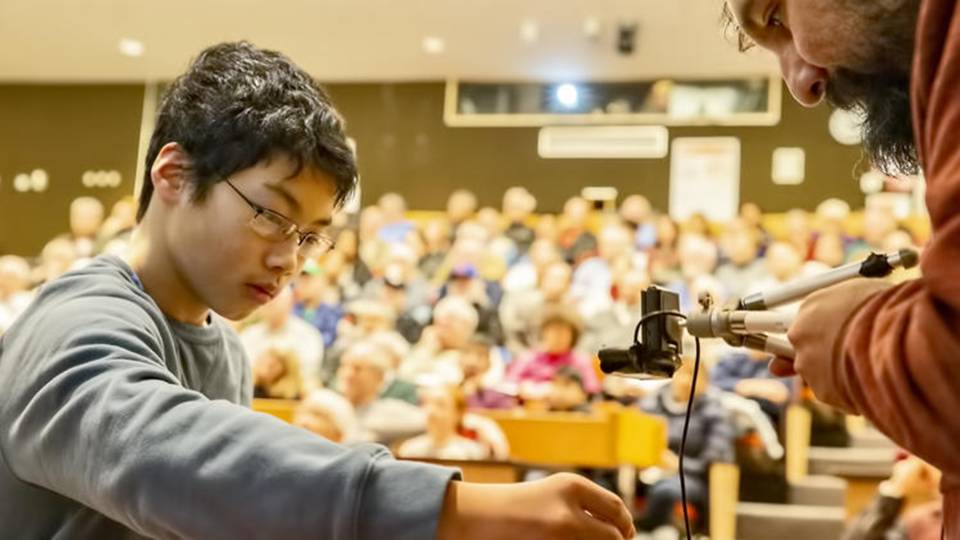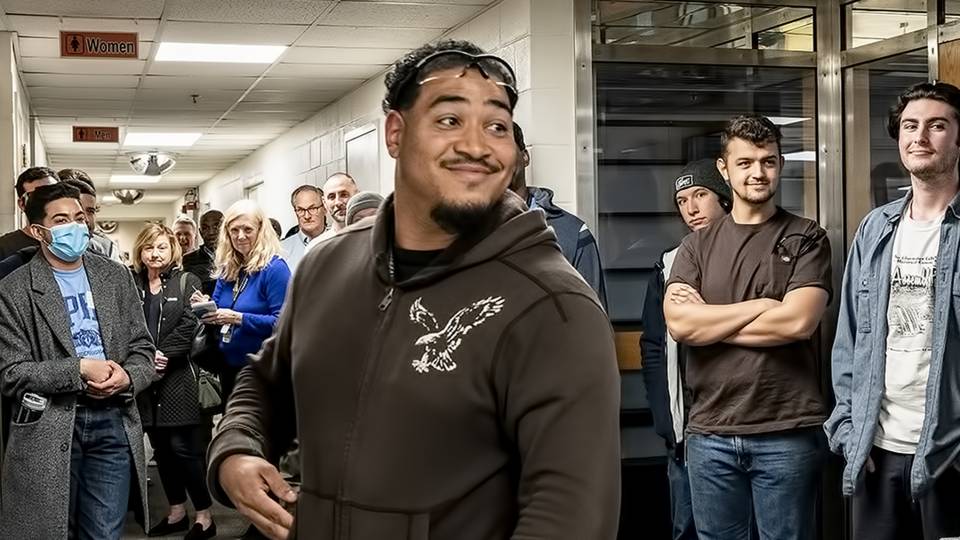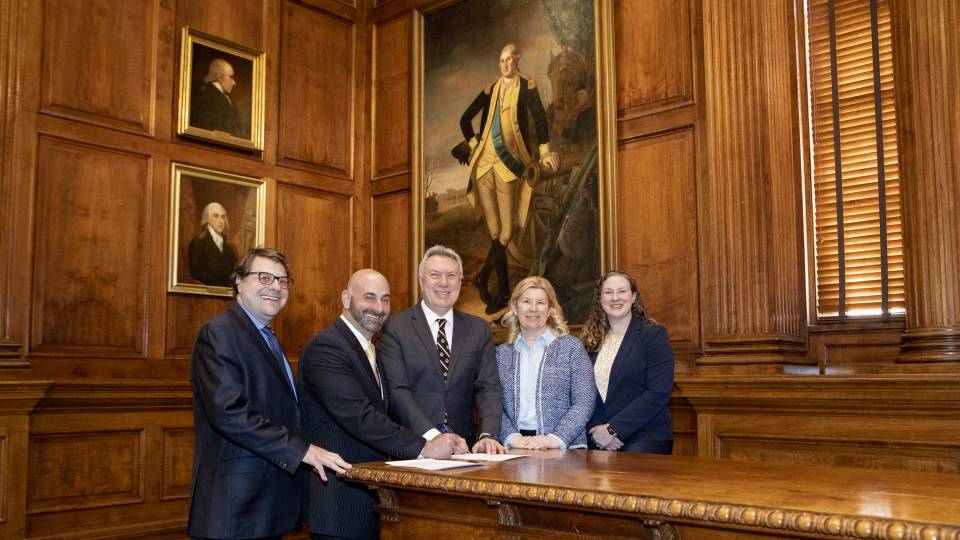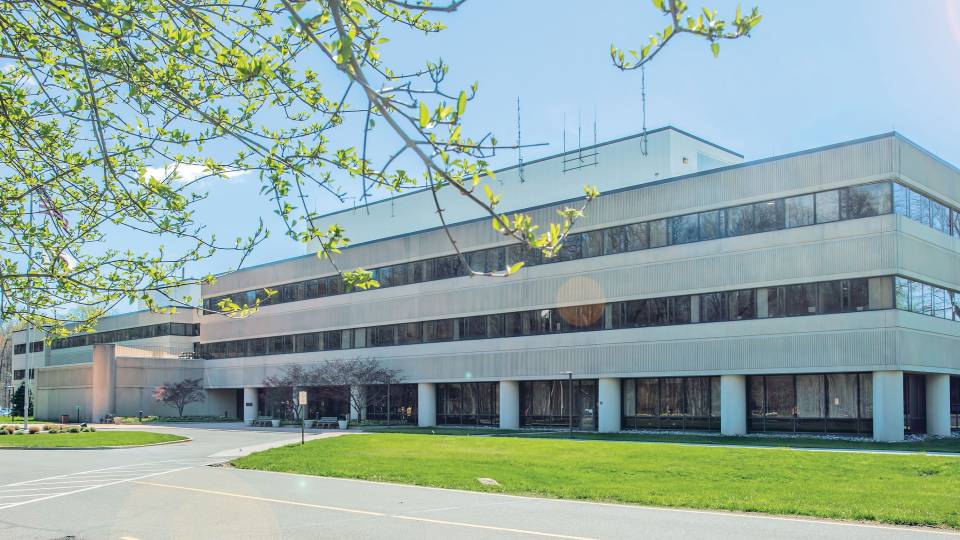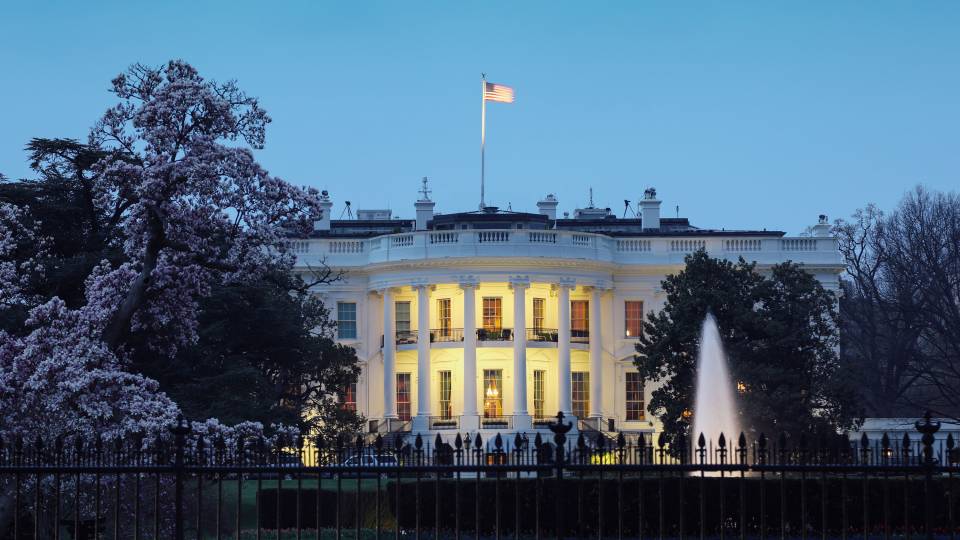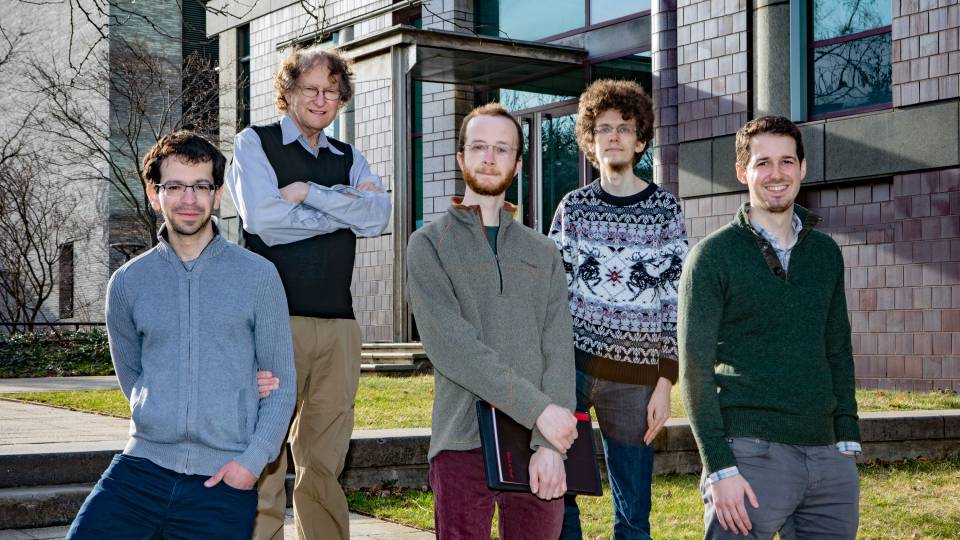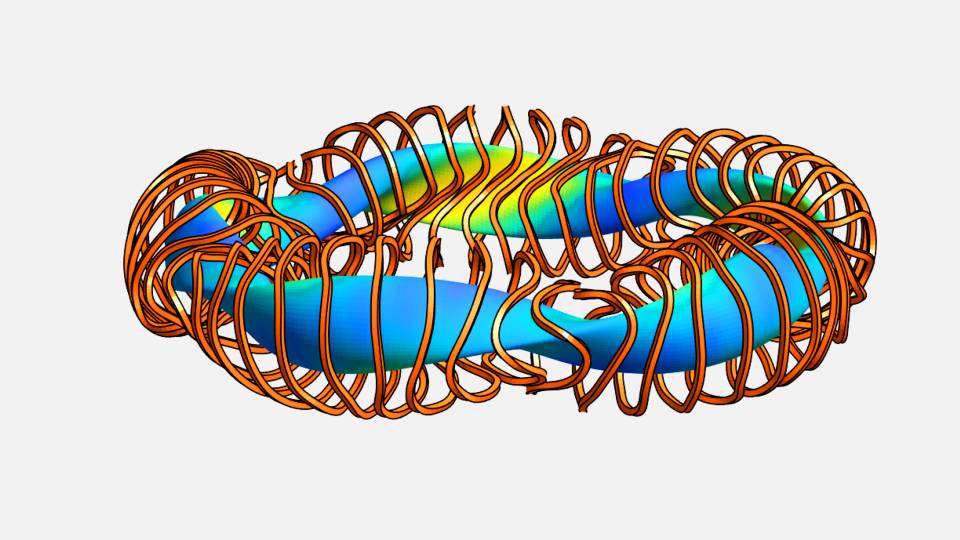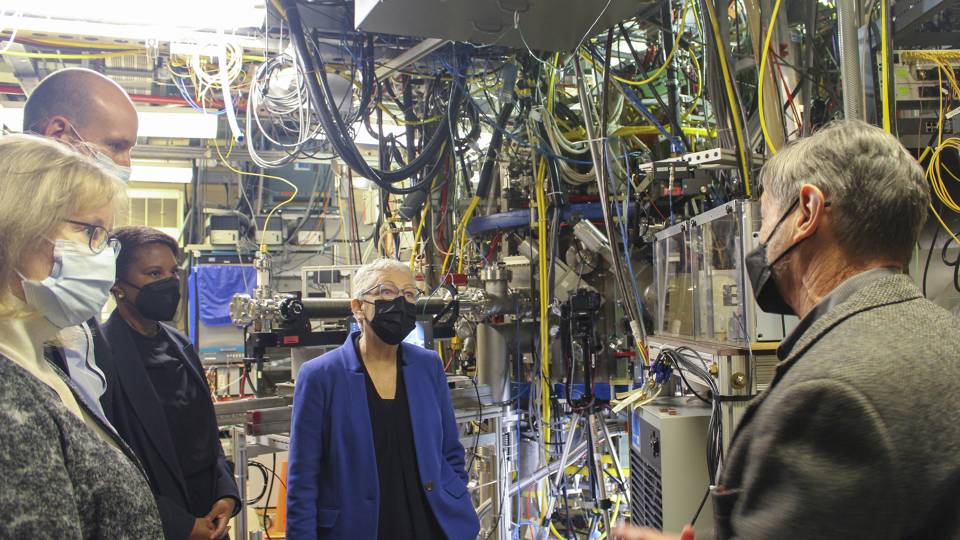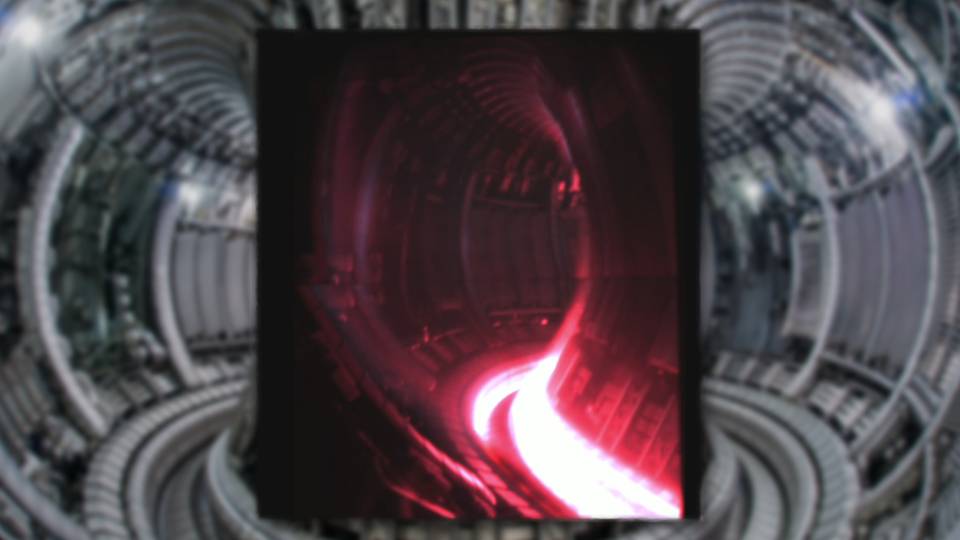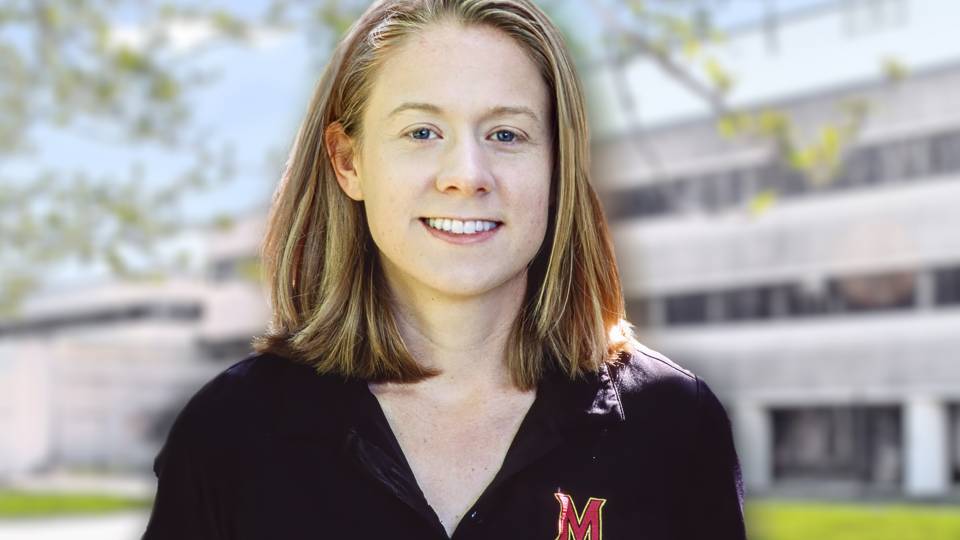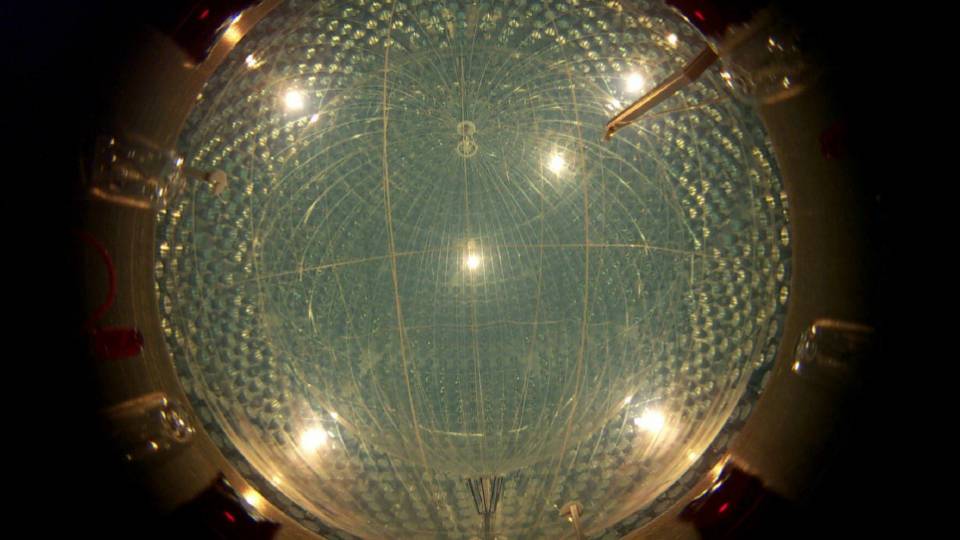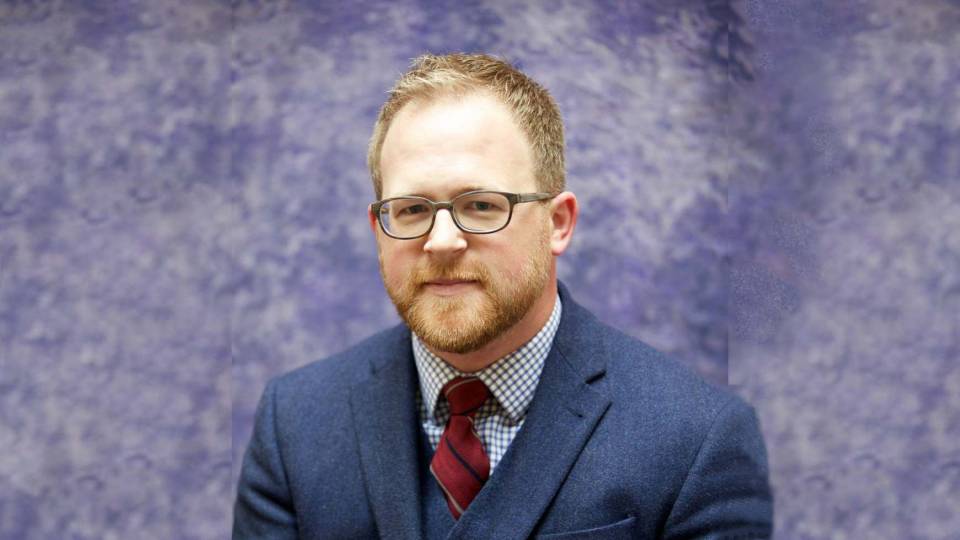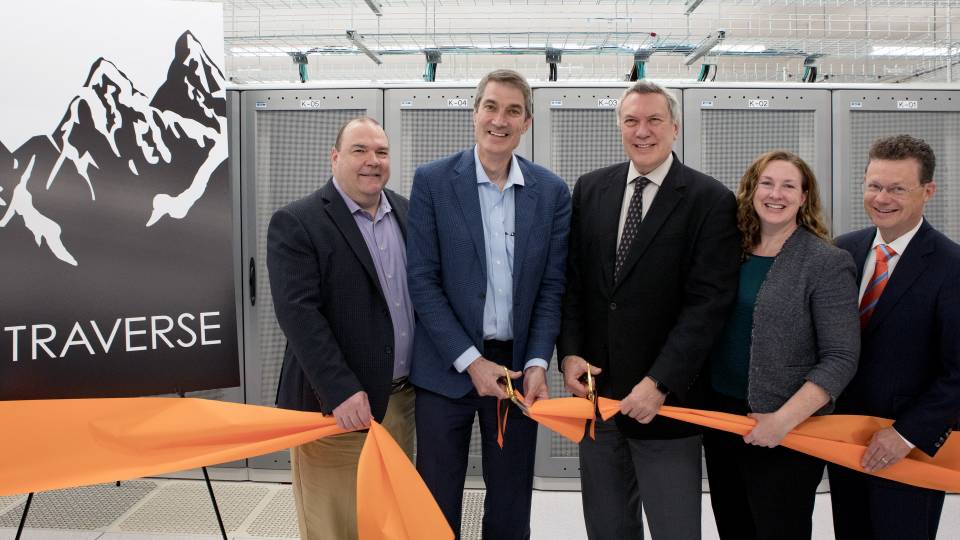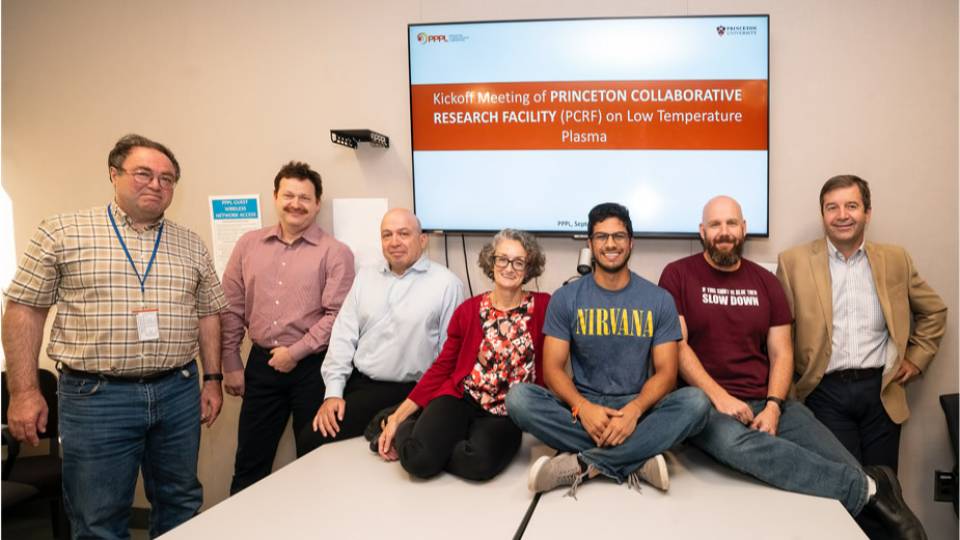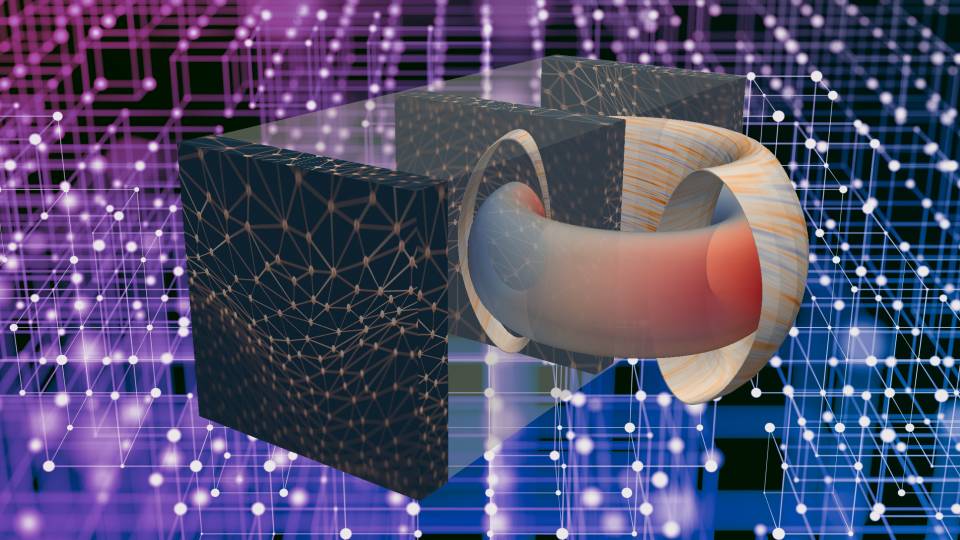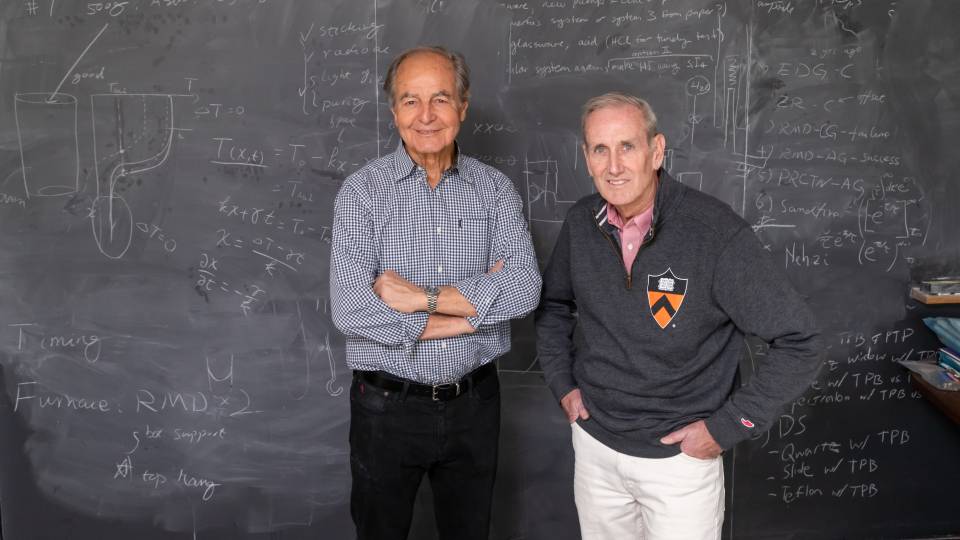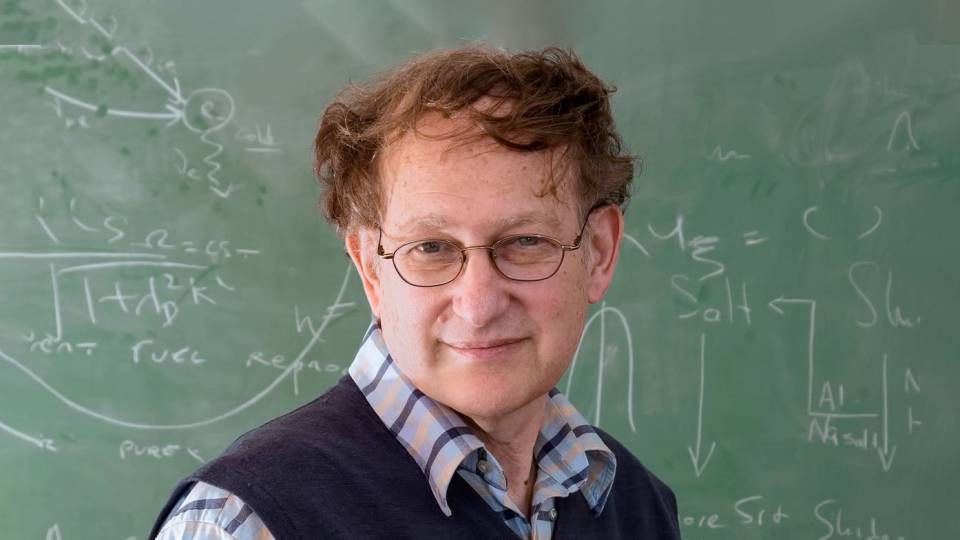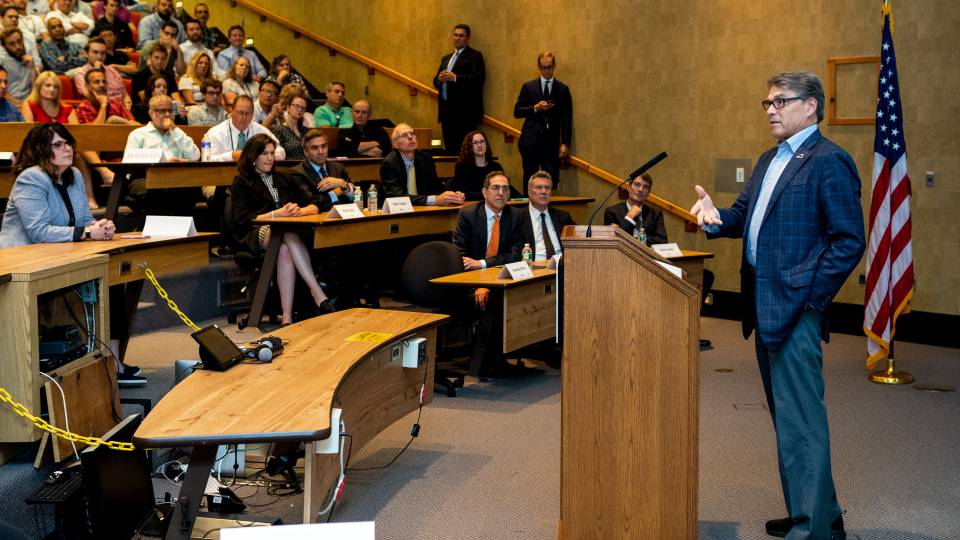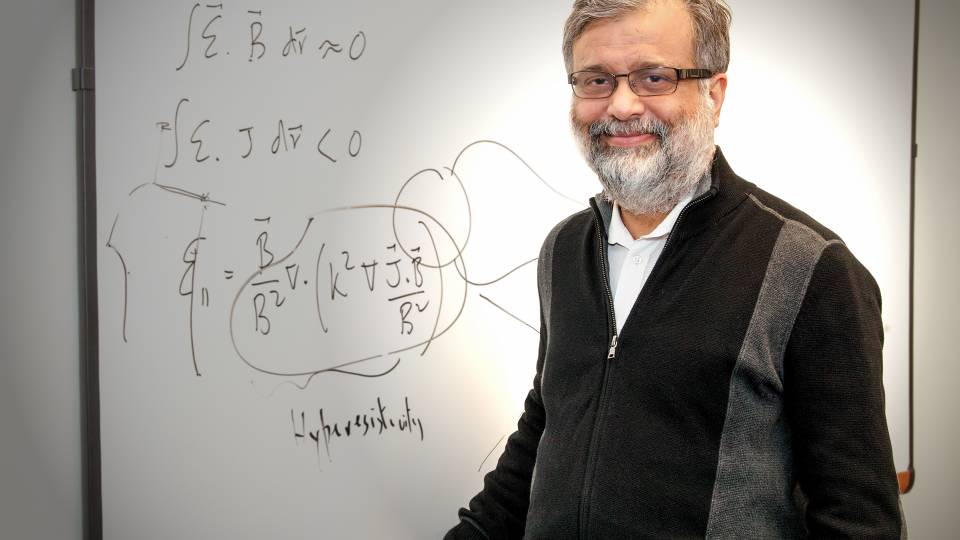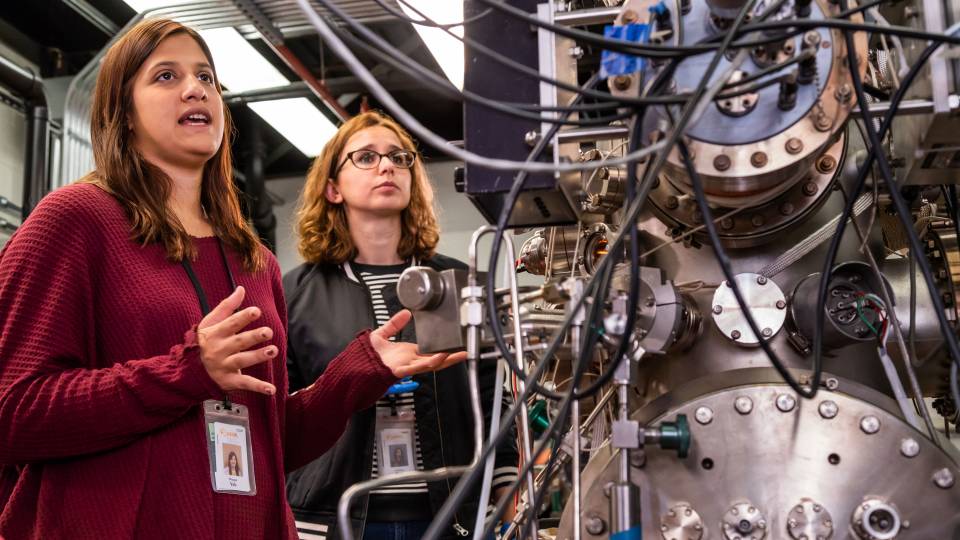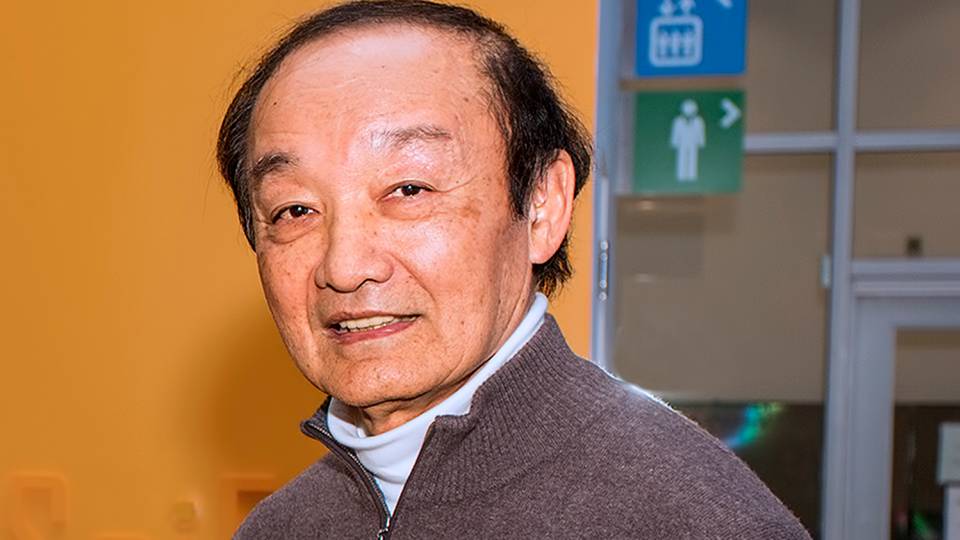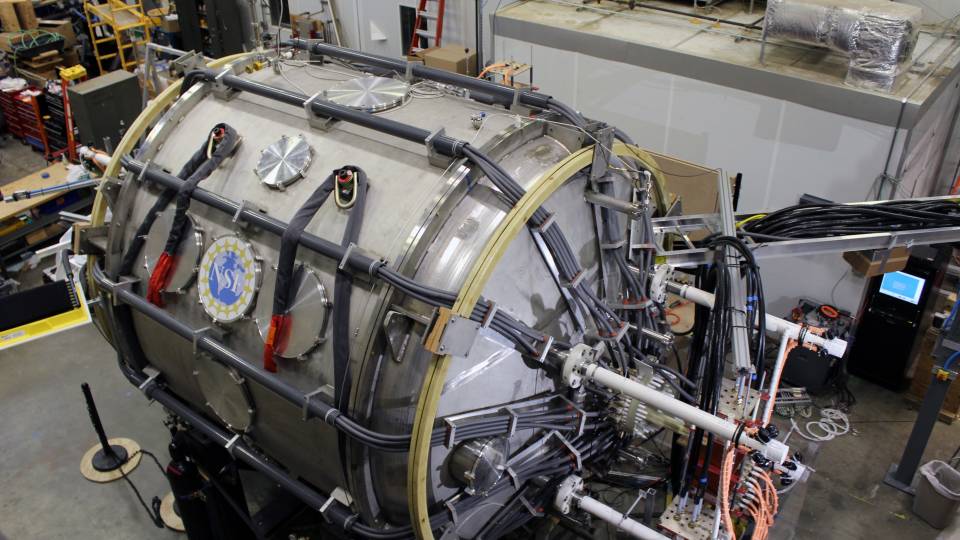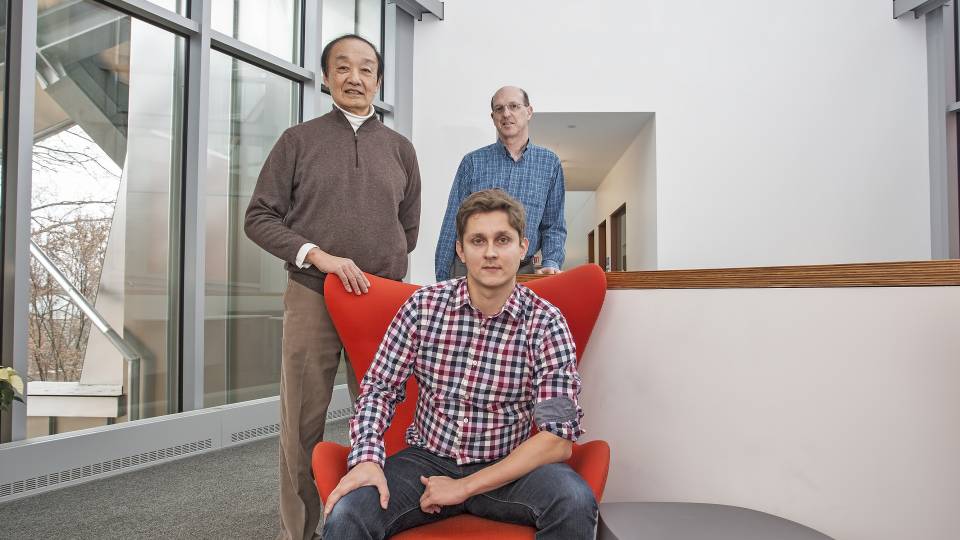Top officials of the U.S. Department of Energy’s (DOE) Office of Science visited the Princeton Plasma Physics Laboratory (PPPL) recently to discuss the Lab’s primary mission to develop fusion energy as a clean, green and carbonless energy source. Officials also learned about PPPL’s expanded research focuses in microelectronics, quantum information science, and sustainability.
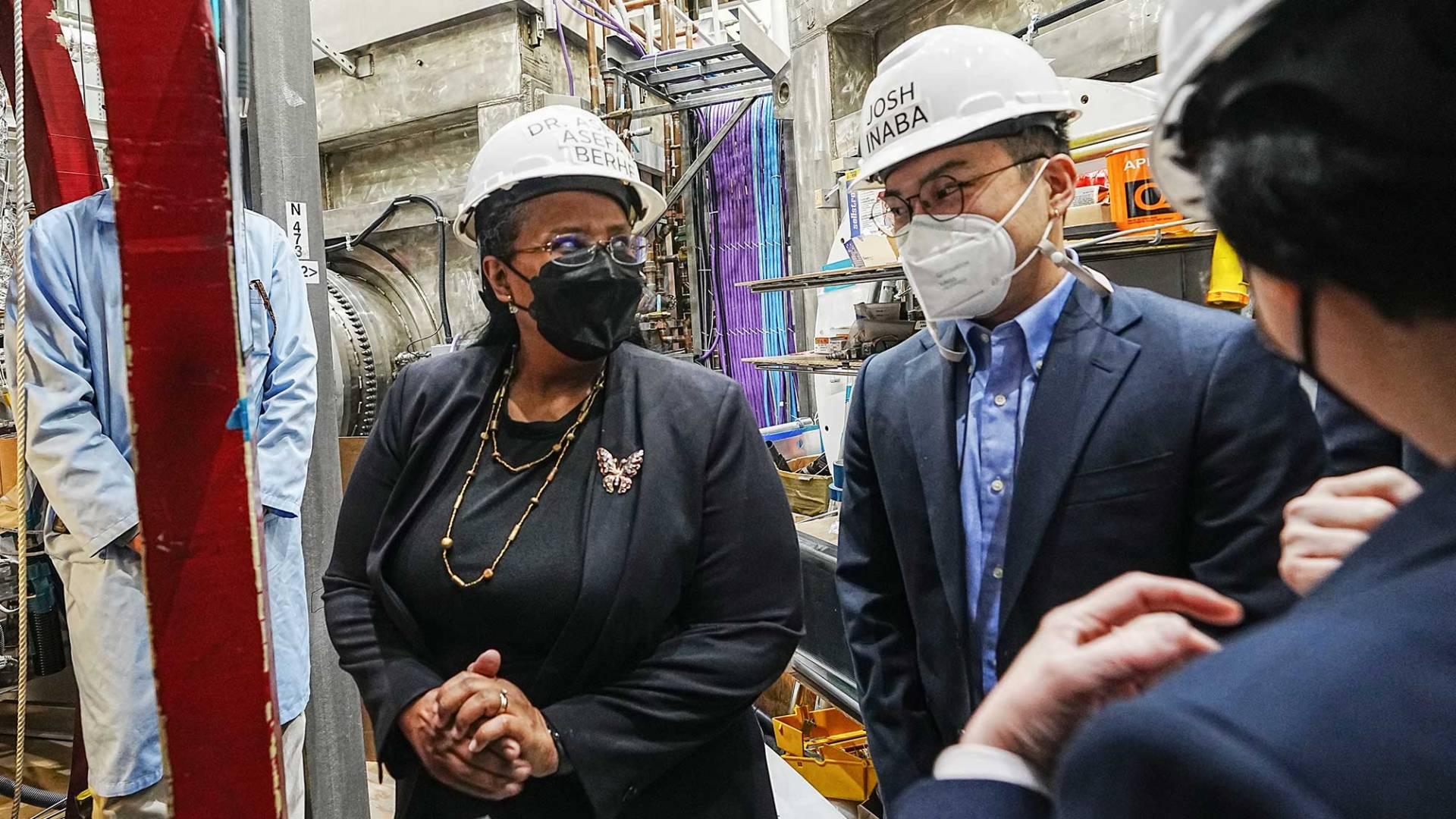
Asmeret Asefaw Berhe, director of the U.S. Department of Energy’s Office of Science, and Josh Inaba, a special assistant to Berhe, at the National Spherical Torus Experiment-Upgrade.
The Feb. 10 visit by Asmeret Asefaw Berhe, director of the U.S. Department of Energy’s (DOE) Office of Science, along with Harriet Kung, deputy director for science programs, comes at an exciting time in the development of fusion energy. In December 2022, fusion ignition was achieved at the National Ignition Facility of Lawrence Livermore National Laboratory — meaning that more energy was produced than was put in.
Berhe said she was happy to visit PPPL, one of 10 national laboratories that are part of the Office of Science and one of 17 DOE national labs. ““This is obviously a place that has a great history in plasma and in fusion science," she said. "It’s been awesome to visit and to talk to everyone and see the excitement it will bring.”
Berhe is a well-known earth scientist whose appointment was confirmed by the U.S. Senate in May 2022. She was previously a professor of soil biogeochemistry and the Ted and Jan Falasco Chair in Earth Sciences and Geology, as well as the interim associate dean for graduate education at the University of California, Merced.
Kung is the senior career official providing oversight for Office of Science research programs. She has served in the DOE for the past 20 years.
Steve Cowley, PPPL director, opened the day’s events with a welcome address. He noted that the White House last year issued a “bold decadal vision for fusion energy” that called for a commercial fusion energy by the end of the 2030s. Cowley said that PPPL “has been at the heart of” fusion energy development. “Delivering that goal is something that motivates us,” he said. “This is the place that contributes to fusion research worldwide.”
Cowley said he was happy to have the opportunity to host Berhe and Kung. “We were so delighted that Dr. Berhe and Dr. Kung came to visit PPPL at such an exciting time in our Laboratory in which we are continuing to develop fusion energy as the energy of the future, while applying our knowledge and expertise in plasma science and computation to new missions in microelectronics, quantum computing, nanotechnology and sustainable sciences.”
The first stop on the tour was the National Spherical Torus Experiment-Upgrade, PPPL’s primary fusion experiment. The NSTX-U is a cored-apple shape that is smaller and more compact than traditional donut-shaped devices. It could provide a more attractive and affordable model for a fusion energy pilot plant, Cowley said. Such a plant was called for in a 2021 National Academies of Science, Engineering and Medicine report to demonstrate the feasibility of fusion energy.
After peeking inside the machine, which is currently undergoing an upgrade, Berhe said she was impressed. “It’s a technical marvel,” she said. “It must be incredible working here. Imagine being part of something like this!”
Behre next visited the Fusion Research and Technology Hub Test Cell — formerly known as the Tokamak Fusion Test Reactor (TFTR) Test Cell — which is being repurposed as future laboratory space for collaborations with private companies. It is the largest such space for fusion experiments in the U.S. and among the largest in the world. The space, along with a new office building, would be part of the Fusion Research and Technology Hub (FuRTH). “This would be a perfect place for a private company,” Cowley said.
International hub for research
While PPPL already has unique spaces like FuRTH for fusion energy research, additional laboratory space is needed to support these new research endeavors, Cowley said.
This is why PPPL has begun architectural designs of a multimillion-dollar building called the Princeton Plasma Innovation Center, which will provide state-of-the-art laboratories along with meeting and office space. Slated for completion by 2026, this facility will serve as an international hub of fusion research, bringing together researchers engaged in high-performance computing and virtual engineering in support of these research efforts. “It really is the future of the Laboratory,” said Tim Meyer, deputy director for operations.
Another stop on the tour was the Facility for Laboratory Reconnection Experiment (FLARE). PPPL has constructed support structures that include a new platform and control room for the experiment, which is three-quarters complete. FLARE will study magnetic reconnection, the process responsible for solar flares and other astrophysical phenomena.
Emily Carter, senior strategic advisor and associate laboratory director for applied materials and sustainability science, discussed PPPL’s expanded mission into low-temperature plasma science, which has numerous industrial applications. PPPL is also partnering with others in the industry on plasma applications that include microelectronics and quantum information science, Carter said.
PPPL’s new emphasis on sustainability science is a perfect fit for a laboratory trying to achieve fusion energy as a clean, green and sustainable energy source, Carter said. “We have to conduct research that pays for the sins of the past and also sets us up for the future,” Carter said. This includes decarbonizing manufacturing, through what Carter calls “electromanufacturing” or plasma-aided or electrified processes, as well as understanding the science behind proposed solar radiation management strategies. The Lab is currently part of several proposals to advance these efforts.
Meeting PPPL apprentices at every stop
At every step of the tour, Berhe met with PPPL’s early-career scientists, researchers, and technicians who are part of PPPL’s four-year apprentice program, which trains technicians in a variety of fields. Aaron Floyd, a fourth-year electrical apprentice, told Berhe the thing he most enjoys working on is the massive motor generators that power the NSTX-U. “You get to crawl inside them and see everything in them,” Floyd said.
PPPL’s science education team also gave Berhe a tour of the Science Education Laboratory. They discussed the many STEM programs the group offers to people of all ages, including the upcoming Young Women’s Conference in STEM, which offers a day of hands-on science for young women in 7th to 10th grade who are interested in science, technology, engineering and mathematics.
Berhe was enthusiastic about PPPL’s engagement efforts. “I’m a huge fan of public outreach and education,” she said. “We’re explaining what we’re doing, and they don’t have to understand the physics if they can share the excitement. It’s also just fun!”
PPPL is just as committed to building a sustainable future for the nation, and that requires developing a diverse workforce. Berhe discussed diversity, equity, inclusion and accessibility (DEIA) with several staff members over lunch. She met with Andrea Viel-Reed, chief human resources officer and senior director of human resources; Barbara Harrison, manager of DEIA; Bill Dorland, associate laboratory director for computational science; Jhovanna Garcia, PPPL’s first student STEM ambassador; and Arturo Dominguez, head of science education.
The group shared their personal experiences openly and honestly, explaining why DEIA is so critical to their work. Berhe said making national laboratories more diverse, equitable, inclusive and accessible is a top priority at the Department of Energy. “It’s important that we advance science for everyone,” she said.
Berhe said she was happy to visit the Laboratory at such a crucial and exciting time for PPPL. “You have to love the idea of fusion energy,” she said, “and the opportunity to have not only that but expanding your mission — I’m excited for you all.”
PPPL, on Princeton University’s Forrestal Campus in Plainsboro, N.J., is devoted to creating new knowledge about the physics of plasmas — ultra-hot, charged gases — and to developing practical solutions for the creation of fusion energy. The Laboratory is managed by the University for the U.S. Department of Energy’s Office of Science, which is the single largest supporter of basic research in the physical sciences in the United States and is working to address some of the most pressing challenges of our time. For more information, visit https://energy.gov/science
